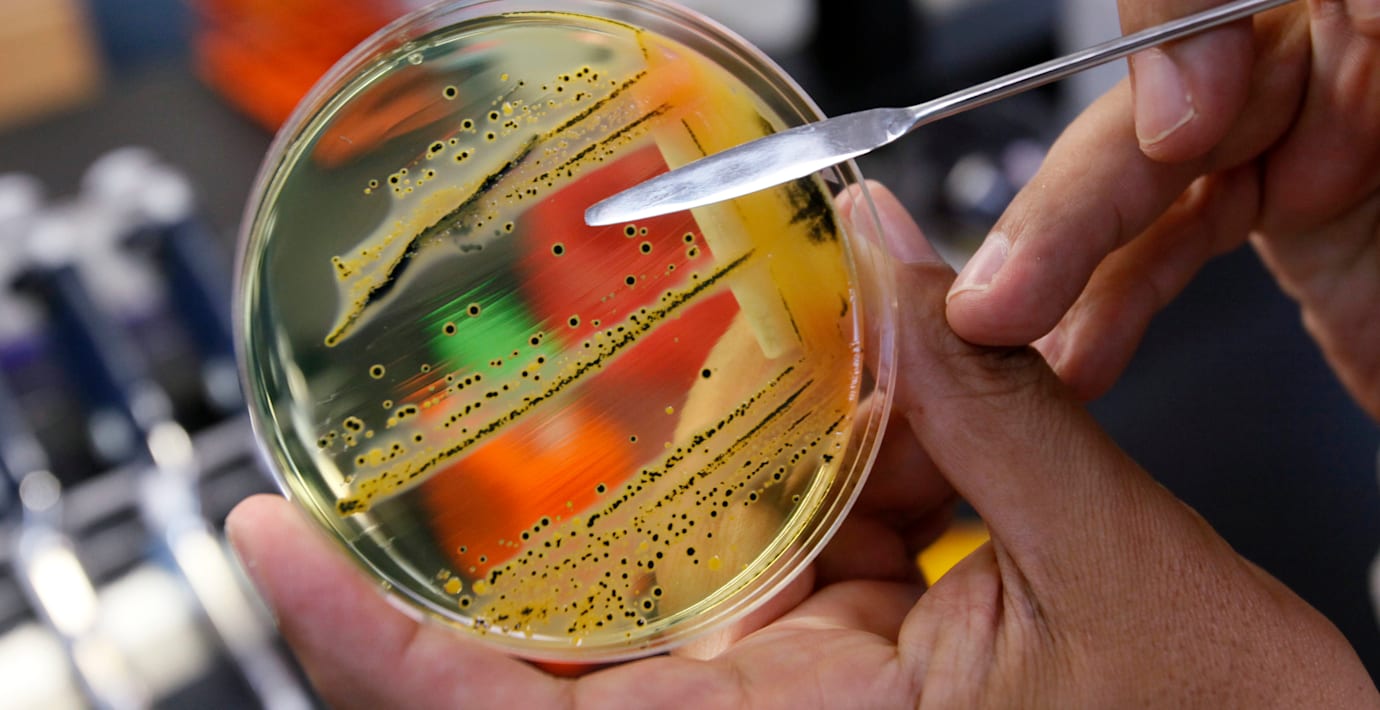
AI bakom genombrott i kampen mot mördarbakterie
Amerikanska forskare har med hjälp av artificiell intelligens upptäckt en ny typ av antibiotika som kan ta kål på den dödliga och multiresistenta bakterien Acinetobacter baumannii, rapporterar BBC.
Bakterien klassificeras som ett ”kritiskt hot” mot människans hälsa av Världshälsoorganisationen. Enligt WHO har bakterien en förmåga att hitta nya sätt att motstå behandling och kan även föra vidare dessa lärdomar till andra bakterier. Den utgör ett särskilt stort hot mot människor med nedsatt immunförsvar och kan bland annat infektera sår och orsaka lunginflammation.
BBC kallar studien, som publicerats i tidskriften Nature, för det senaste exemplet på hur AI kan bli en revolutionerande kraft inom vetenskap och medicin.
bakgrund
Acinetobacter baumannii
Wikipedia (en)
Acinetobacter baumannii is a typically short, almost round, rod-shaped (coccobacillus) Gram-negative bacterium. It is named after the bacteriologist Paul Baumann. It can be an opportunistic pathogen in humans, affecting people with compromised immune systems, and is becoming increasingly important as a hospital-derived (nosocomial) infection. While other species of the genus Acinetobacter are often found in soil samples (leading to the common misconception that A. baumannii is a soil organism, too), it is almost exclusively isolated from hospital environments. Although occasionally it has been found in environmental soil and water samples, its natural habitat is still not known.
Bacteria of this genus lack flagella, whip-like structures many bacteria use for locomotion, but exhibit twitching or swarming motility. This may be due to the activity of type IV pili, pole-like structures that can be extended and retracted. Motility in A. baumannii may also be due to the excretion of exopolysaccharide, creating a film of high-molecular-weight sugar chains behind the bacterium to move forward. Clinical microbiologists typically differentiate members of the genus Acinetobacter from other Moraxellaceae by performing an oxidase test, as Acinetobacter spp. are the only members of the Moraxellaceae to lack cytochrome c oxidases.A. baumannii is part of the ACB complex (A. baumannii, A. calcoaceticus, and Acinetobacter genomic species 13TU). It is difficult to determine the specific species of members of the ACB complex and they comprise the most clinically relevant members of the genus. A. baumannii has also been identified as an ESKAPE pathogen (Enterococcus faecium, Staphylococcus aureus, Klebsiella pneumoniae, Acinetobacter baumannii, Pseudomonas aeruginosa, and Enterobacter species), a group of pathogens with a high rate of antibiotic resistance that are responsible for the majority of nosocomial infections.Colloquially, A. baumannii is referred to as "Iraqibacter" due to its seemingly sudden emergence in military treatment facilities during the Iraq War. It has continued to be an issue for veterans and soldiers who served in Iraq and Afghanistan. Multidrug-resistant A. baumannii has spread to civilian hospitals in part due to the transport of infected soldiers through multiple medical facilities. During the COVID-19 pandemic, coinfection with A. baumannii secondary to SARS-CoV-2 infections has been reported multiple times in medical publications.
Omni är politiskt obundna och oberoende. Vi strävar efter att ge fler perspektiv på nyheterna. Har du frågor eller synpunkter kring vår rapportering? Kontakta redaktionen



